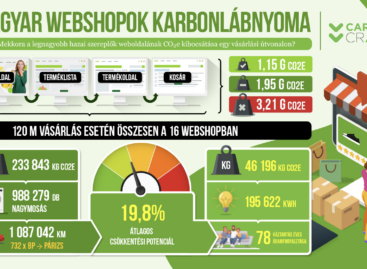Hungary has one of the highest inflation rates in the EU in May
Despite the government’s introduction of a margin freeze on food in mid-March, inflation accelerated again in May, and according to the latest European Inflation Outlook by Privátbankár, Hungary continues to lag at the bottom of the EU rankings. The annual inflation rate was 4.4 percent in May, which is 0.2 percentage points higher than the April figure.
 The statistical data represent a bitter confrontation after government communications had recently spoken of an encouraging turnaround. Hungarian inflation, which was still an EU record at the beginning of 2025, fell behind two countries in April – Estonia and Romania. This favorable turnaround came to a halt in May, and with inflation accelerating again, Hungary still ranks 25th out of the 27 EU member states.
The statistical data represent a bitter confrontation after government communications had recently spoken of an encouraging turnaround. Hungarian inflation, which was still an EU record at the beginning of 2025, fell behind two countries in April – Estonia and Romania. This favorable turnaround came to a halt in May, and with inflation accelerating again, Hungary still ranks 25th out of the 27 EU member states.
The official intervention – like the margin freeze – did not bring the desired results in the short term either. Experts and independent analysts are increasingly drawing attention to the fact that such measures tend to distort the market in the long term and do not provide a real solution to price increases. They also remind us that the introduction of the price freeze in 2021 increased inflation by 4 percentage points, according to the estimates of the Hungarian National Bank.
European outlook: inflation accelerated in several countries
However, the acceleration of inflation in Hungary is not an isolated phenomenon. Based on May data, the consumer price index increased in 17 out of 40 European countries examined. The largest increases were produced by Ukraine (0.8 percentage points) and North Macedonia (0.7 percentage points). Hungary, however, was unable to advance from 25th place and remains in the back of the EU field.
The most favorable situation was for Cyprus, where inflation has already turned negative on an annual basis – thus overtaking Switzerland and Liechtenstein, which are in the economic union. The worst situation remains in Turkey, where although inflation has fallen below 60 percent, it still reached 35 percent.
Central bank interest rate cuts and the competition between real interest rates
The good news is that no central bank raised its base rate in May, which indicates that the authorities expect a general improvement in price stability. In fact, the central bank base rate was reduced in 26 countries, for example in 20 EU member states following the decision of the European Central Bank. At the same time, Hungary remained at 6.5 percent, so we are still the country with the sixth highest interest rate, tied with Romania and Moldova.
Based on the retrospective real interest rate (the difference between the central bank base rate and past inflation), Hungary remains in sixth place. This is currently 2.1 percentage points, but for savers, what really matters is the forward-looking real interest rate that takes into account future inflation, which indicates the stability of the value of investments.
Related news
Related news
Investment dumping is coming in the food industry
🎧 Hallgasd a cikket: Lejátszás Szünet Folytatás Leállítás Nyelv: Auto…
Read more >It turns out which online food ordering platform websites are the most sustainable
🎧 Hallgasd a cikket: Lejátszás Szünet Folytatás Leállítás Nyelv: Auto…
Read more >Customers are also looking for the record-breaking iPhones in refurbished versions
🎧 Hallgasd a cikket: Lejátszás Szünet Folytatás Leállítás Nyelv: Auto…
Read more >



